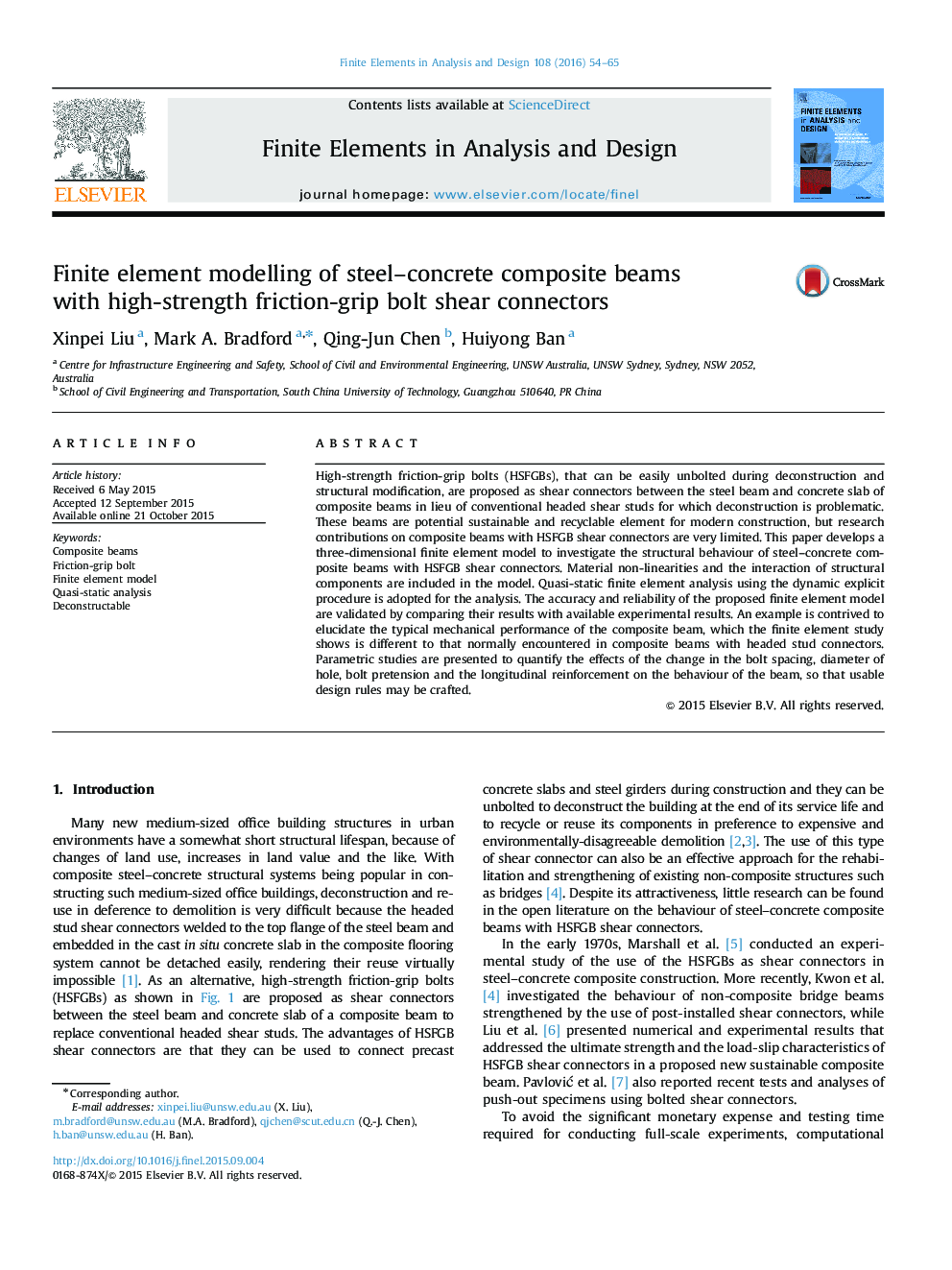| Article ID | Journal | Published Year | Pages | File Type |
|---|---|---|---|---|
| 6925589 | Finite Elements in Analysis and Design | 2016 | 12 Pages |
Abstract
High-strength friction-grip bolts (HSFGBs), that can be easily unbolted during deconstruction and structural modification, are proposed as shear connectors between the steel beam and concrete slab of composite beams in lieu of conventional headed shear studs for which deconstruction is problematic. These beams are potential sustainable and recyclable element for modern construction, but research contributions on composite beams with HSFGB shear connectors are very limited. This paper develops a three-dimensional finite element model to investigate the structural behaviour of steel-concrete composite beams with HSFGB shear connectors. Material non-linearities and the interaction of structural components are included in the model. Quasi-static finite element analysis using the dynamic explicit procedure is adopted for the analysis. The accuracy and reliability of the proposed finite element model are validated by comparing their results with available experimental results. An example is contrived to elucidate the typical mechanical performance of the composite beam, which the finite element study shows is different to that normally encountered in composite beams with headed stud connectors. Parametric studies are presented to quantify the effects of the change in the bolt spacing, diameter of hole, bolt pretension and the longitudinal reinforcement on the behaviour of the beam, so that usable design rules may be crafted.
Related Topics
Physical Sciences and Engineering
Computer Science
Computer Science Applications
Authors
Xinpei Liu, Mark A. Bradford, Qing-Jun Chen, Huiyong Ban,
